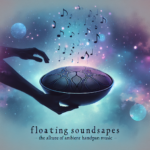<!DOCTYPE html>
<html lang="en">
<head>
<meta charset="UTF-8">
<meta name="viewport" content="width=device-width, initial-scale=1.0">
<title>The Magic of Glissandos: Adding Emotional Depth to Handpan Playing</title>
<style>
body {
font-family: Arial, sans-serif;
line-height: 1.6;
background-color: #f9f9f9;
color: #333;
margin: 0;
padding: 0;
}
.container {
max-width: 800px;
margin: 20px auto;
padding: 20px;
background-color: #fff;
border-radius: 8px;
box-shadow: 0 2px 4px rgba(0, 0, 0, 0.1);
}
h1, h2, h3 {
color: #0056b3;
}
ul {
list-style-type: disc;
margin-left: 20px;
}
.faq {
margin-top: 40px;
}
</style>
</head>
<body>
<div class="container">
<h1>The Magic of Glissandos: Adding Emotional Depth to Handpan Playing</h1>
<p>The handpan is a unique and enchanting musical instrument that has captured the hearts of musicians and listeners alike. Its ethereal sounds and captivating harmonics offer a vast canvas for expression. Among the various techniques employed by handpan players, the glissando stands out as a signature method that adds emotional depth and nuance to performances. This article explores the magic of glissandos, their role in enhancing handpan playing, and provides insights on mastering this technique to evoke emotion and create a profound musical dialogue.</p>
<h2>Understanding the Glissando</h2>
<p>The term "glissando" originates from the French word "glisser," meaning "to glide." In musical terms, a glissando involves a glide or slide from one pitch to another, bridging the two notes with a smooth transition. This technique is prevalent across various musical instruments, including the piano, violin, and harp. However, on the handpan, glissandos offer a distinctive charm that resonates deeply with its organic sound structure.</p>
<p>Executing a glissando on the handpan involves a continuous motion across the instrument's surface with the fingers, most often using the thumb or index finger. The gentle pressure and intention create a seamless, swooping effect that can elevate a basic melody into an emotive narrative. The glissando’s fluid nature allows for subtle emotional touches that can convey longing, joy, or introspection in improvisations and compositions.</p>
<h2>Emotional Impact and Expression</h2>
<p>One of the primary reasons glissandos hold such charm in handpan music is their ability to infuse expression into the sound. The sliding motion is inherently connected to human emotion, akin to a sigh or a breath, making it a powerful tool for communication. When done with intention, a glissando can transform a simple sequence of notes into an evocative phrase that speaks to the listener’s heart.</p>
<p>Consider the context of a contemplative solo. A well-placed glissando can introduce a moment of introspection, allowing the performer to build emotional tension before resolving it. In ensemble settings, glissandos can function as connective tissue, smoothly transitioning between different musical passages or moods, enhancing the overall cohesiveness of a performance.</p>
<h2>Techniques for Mastering the Glissando</h2>
<p>Mastering the glissando on the handpan requires both technical agility and an acute sense of expression. Here are some key techniques and tips for enhancing your glissando execution:</p>
<h3>1. Start with Controlled Movements</h3>
<p>Begin practicing glissandos with short, controlled movements over a small range of notes. Gradually increase the distance as you gain confidence in maintaining a smooth, consistent sound. Focus on even finger pressure to ensure continuity of sound across the glissando.</p>
<h3>2. Experiment with Finger Positions</h3>
<p>While the thumb and index finger are common choices for glissandos, exploring different fingers or combinations can yield diverse textures and dynamics. Each handpan is unique, so experiment with varying finger angles and pressures to discover what works best on your instrument.</p>
<h3>3. Integrate Dynamics</h3>
<p>A glissando’s potency lies in its dynamic range. Practice varying the volume and speed to bring out different emotional shades. Gentle, slow glissandos can create tension and suspense, while faster, more robust glissandos can convey excitement or passion.</p>
<h3>4. Practice with Rhythmic Variety</h3>
<p>Integrating rhythmic variations into glissandos can add intrigue and depth. Consider starting the glissando on different beats of a measure or incorporate it in syncopated patterns to give your music a distinct voice and character.</p>
<h3>5. Record and Reflect</h3>
<p>Recording practice sessions allows for reflective listening and analysis. Listening back helps identify areas for improvement and offers insights on how glissandos affect the emotional flow of your pieces. Reflect on the emotional landscapes you wish to create and tailor your glissandos accordingly.</p>
<h2>The Role of Glissandos in Composition</h2>
<p>Beyond improvisation, glissandos play a crucial role in handpan compositions. Incorporating glissandos deliberately into a composition can guide the listener’s emotional journey. It can serve as a motif or a recurring element that ties sections together, enhancing thematic coherence.</p>
<p>In a layered composition, glissandos can provide contrast to more rhythmic or percussive elements, offering a lyrical quality that enriches the harmonic texture. This sliding technique can also be used as a transitional device, smoothly leading from one section to another, maintaining fluidity and cohesion throughout the piece.</p>
<h2>The Cultural and Historical Context</h2>
<p>The use of glissandos is steeped in history across various cultures and musical traditions. From portamento singing in Indian classical music to the sweeping harp glissandos of Western symphonic works, this technique serves as a bridge between disparate musical styles, symbolizing universality in expression.</p>
<p>In the context of handpan music, glissandos resonate with the instrument’s inherently global and cross-cultural origins. As an instrument that draws on the steel drum and the tonal structures of Asian and African music, the handpan is uniquely suited to glissandos, which evoke a sense of musical storytelling that transcends boundaries.</p>
<h2>Conclusion</h2>
<p>The magic of glissandos lies in their ability to transform musical notes into a flowing narrative rich with emotion and depth. For handpan players, mastering this technique opens a portal to a wider emotional spectrum, allowing for deep personal expression and profound connections with listeners.</p>
<p>In both spontaneous improvisations and crafted compositions, glissandos serve as a versatile tool for enhancing musical storytelling. As players continue to explore and refine their use of glissandos, they unlock new realms of creative potential within the evocative world of handpan music. Thus, the journey of mastering glissandos is not just about technical skill, but also about embracing the emotive essence of music itself.</p>
<div class="faq">
<h2>Frequently Asked Questions</h2>
<h3>1. What is a glissando in music?</h3>
<p>A glissando is a technique used in music where the player glides smoothly from one pitch to another, creating a continuous sound that bridges the two notes. This technique is common across many instruments and genres of music.</p>
<h3>2. How can I improve my glissando technique on the handpan?</h3>
<p>Improving your glissando technique involves practicing controlled movements, experimenting with different fingers, exploring dynamics, incorporating rhythmic variations, and recording your practice sessions for reflective listening.</p>
<h3>3. Why are glissandos important in handpan music?</h3>
<p>Glissandos are important in handpan music because they add emotional depth and nuance, enabling musicians to express a wide range of emotions and enhance the overall fluidity and cohesion of their performances.</p>
<h3>4. Can beginners learn to play glissandos on the handpan?</h3>
<p>Yes, beginners can learn to play glissandos with practice and patience. Starting with short, controlled movements and gradually expanding the technique can help beginners integrate glissandos into their playing effectively.</p>
<h3>5. How do glissandos contribute to the emotional expression in music?</h3>
<p>Glissandos contribute to emotional expression in music by creating a smooth, lyrical transition between notes that can evoke feelings such as longing, joy, or introspection, enhancing the listener's emotional experience.</p>
</div>
</div>
</body>
</html>The Magic of Glissandos: Adding Emotional Depth to Handpan Playing

Leave a comment




